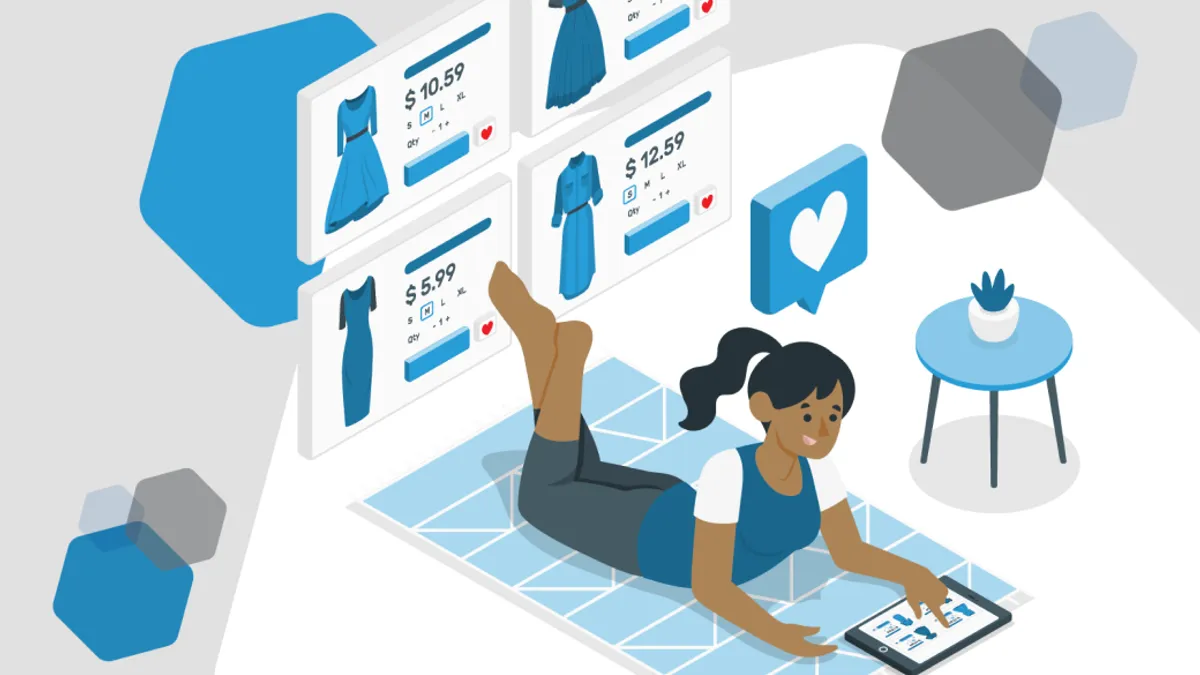Once the purchase button is clicked, the real magic begins—the post-purchase experience. It's not just a transactional aftermath; it's a carefully curated journey where brands engage, delight, and leave a lasting impression on their customers. From order confirmations to delivery surprises, this stage is where loyalty is forged and advocacy blossoms.
Retail brands often focus on getting customers in the door. Efforts are spent attracting, engaging, and converting. But in an omnichannel world, what happens after the purchase—the post-purchase experience—has significantly grown in importance. Not only is this stage a critical time to communicate with shoppers, but an opportunity to build trust and loyalty, which are pivotal elements in turning customers into repeat shoppers and brand advocates.
The link between post-purchase engagement and customer loyalty
Retailers have an incentive to create loyal customers: Research shows that loyal customers can make up to 67% or more purchases compared to orders made by new consumers. It’s the 80/20 rule; 80% of future revenue will come from just 20% of your existing customers. Moreover, customer churn can have a big impact on profitability.
A poor post-purchase experience leads to negative feelings, frustration, and brand dissatisfaction. As the final impression, it carries a lot of weight in determining whether a customer will return. To illustrate, one survey found that 85% of consumers will not shop with a retailer again after having had a poor delivery experience. The solution lies in an exceptional customer experience, particularly during the final leg of the journey.
Unlock brand loyalty with post-purchase engagement
The post-purchase experience can be broken down into components. Each retail brand can create its own unique interactions. However, most include touchpoints such as order confirmation emails and/or SMS, shipping and tracking updates, delivery and unboxing, returns and exchanges policies, and easy access to customer support. How a brand engages consumers during this phase has an enormous effect on whether they’ll shop with a retailer again and share their experience with others.
Delivery: Anticipation builds as customers wait for their product. Each notification can generate positive emotions while reassuring shoppers that a brand will follow through on its promise. Touchpoints surrounding delivery are crucial: over 70% of U.S. consumers say speed, convenience, and friendly service matter most to their experience. Businesses that prioritize seamless delivery demonstrate care for their customers, nurturing trust and loyalty with every order.
After delivery, retailers can further engage through surveys, review requests, sending discounts and promotions, and generating engaging post-purchase content and product resources.
The unboxing experience: One post-purchase interaction that can set brands apart is unboxing. Retailers that generate excitement, emotion, and value through packaging make a big impression. Unboxing is also an excellent inspiration for UGC. Over 90,000 people type ‘unboxing’ into YouTube every month, and 62% of people who view unboxing videos do so when researching a particular product.
Unboxing is an opportunity to personalize, attract, and build loyalty. It can include elements that enhance brand image and value, creating a memorable moment. It allows brands to introduce themselves, tell their brand story, give gifts, share their product journey, and show appreciation to the customer.
Nurture customers, build connections
Post-purchase engagement is the ongoing interactions between a brand and its customer after a purchase. For example, if a customer buys a pair of shoes, the activities that follow should continue to engage the customer: The brand notifies them about order tracking and delivery date, they receive a discount code when they unbox their purchase, and they’re invited to review their experience or explore product guides. Each of these is a way to inform and connect beyond the sale.
“As retailers grow and mature, their fulfillment experience must adapt and stay agile to meet customers’ evolving expectations. Brands often come to Cart.com for our extensive value-added services that allow a more tailored and personalized customer delivery experience," says Joe Barth, Chief Logistics Officer at Cart.com.
Implement a post-purchase engagement strategy
Brands can implement a post-purchase strategy by diving deep into their existing processes and customer touchpoints. Assess each touchpoint and identify any challenges or pain points. The next step is finding innovative ways to enhance the customer journey post-sale and elevate satisfaction levels. Retailers can do things like integrate technology and use automation to streamline post-purchase communications or train customer service teams to provide exceptional support.
Businesses often use third-party logistics providers (3PLs) to streamline the post-purchase experience. 3PLs have both the services and technology to optimize engagement. Clients can leverage a 3PL’s order management system (OMS) and order tracking to provide transparency and boost consumer confidence or invest in value-added services to customize packaging and delivery.
“Selecting the right order management system will empower a brand to manage and have full visibility to the lifecycle of an order,” says Lars Anderson, Vice President of Fulfillment at Cart.com. “From the moment the order is placed, picked, packed, and shipped as well as after-sales services, an OMS will offer visibility to not just the business but real time updates to the end-consumer as well,” added Anderson.
Brands should also identify important KPIs to measure and analyze engagement efforts. Measurements such as the Perfect Order Rate (POR), customer churn rate, Net Promoter Score (NPS), Customer Satisfaction Score (CSAT), and Customer Lifetime Value (CLV) are excellent starting points. Retailers should continue to fine-tune strategies to develop stronger customer loyalty and drive long-term success.
Benefits of engagement beyond the sale
Brands that craft a personalized and memorable experience post-purchase see powerful results. When customers are optimally engaged, retailers can strengthen customer relationships through communications, providing valuable information, offering support, addressing concerns, and showing appreciation, ultimately elevating customer satisfaction and loyalty. This strategic approach encourages repeat purchases, positive word-of-mouth, user-generated content (UGC), referrals, and brand advocacy.
In retail, the journey doesn't end at the point of purchase—it's merely the beginning of forging a long-term relationship. By mastering post-purchase engagement, businesses enhance customer satisfaction, build trust, boost CLV, and encourage repeat purchases. Moreover, the ripple effect extends far beyond the transactions—brands have the opportunity to cultivate a community of loyal brand advocates who champion their products and values, setting them up for sustainable growth.
For more insights into consumer behaviors and actionable strategies to improve the post-purchase experience, download your complimentary copy of Cart.com’s 2024 State of the retail consumer eBook.










